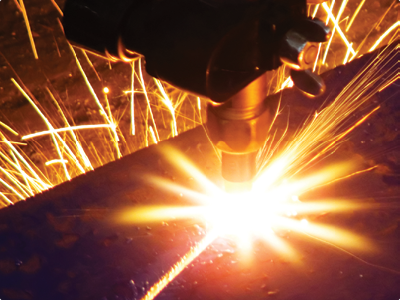5 Considerations for Choosing a Plasma Cutter
Nov 7, 2022, 13:29 PM
by
User Not Found
If you’re new to plasma cutting, or just want to upgrade your machine, here are five considerations for helping you make an informed decision on buying a new plasma cutter.
When it comes to sheet metal fabrication, recent advances in plasma cutting technology are changing the impact that plasma can have on your bottom line. High-definition plasma cutting offers high-quality cuts at faster speeds that can help reduce costs
associated with overtime and defects.

Just as with any other tools and machines in your shop or garage, there are several important factors to consider when purchasing a plasma cutter. If you’re new to plasma cutting, or just want to upgrade your machine, here are five considerations
for helping you make an informed decision on buying a new plasma cutter.
1. Material Thickness and Amperage
Plasma cutters can cut any material that conducts electricity including steel, stainless steel, copper and aluminum. Knowing what material you will be working with most often is important, as the thickness of your chosen material will affect which plasma
cutter to choose based on the amperage. Unlike welding, plasma cutting requires a relatively high voltage and a low amperage, so it is key to find a plasma cutter with the correct amperage in order to cut through thicker materials. Buying a plasma
cutter that doesn’t provide enough power for your tasks can slow you down and complicate projects.
2. Voltage
Plasma cutters come in three main voltage options: 115V, 230V, or dual voltage. 115V should be fine for beginners who are using a standard home outlet, but if you are looking for a machine with more power for professional use, you may want 230V. Dual
voltage plasma cutters are best for those who switch back and forth between different locations and need a machine that can adapt to different power sources.
3. Duty Cycle
The duty cycle refers to the length of time within a ten-minute span that a plasma cutter can operate without stopping, before it needs to stop and cool down. For example, a three-minute duty cycle means that a plasma cutter can run for three minutes
and needs to cool down for seven. Typically, higher duty cycles are ideal for heavy fabrication and high-speed production environments, while a shorter duty cycle is adequate for less frequent use or smaller welding shops. It’s important to
purchase a plasma cutter with a duty cycle that aligns with your requirements.

4. Portability
Plasma cutters can weigh from as little as 20 pounds and as much as 100 pounds for larger industrial machines. Think about your needs once more: do you need to carry your plasma cutter around from job to job? If so, you’ll want something you can
easily carry around for wherever and whenever you’ll need it.
5. Operating Cost
Plasma cutters require consumables like shields, nozzles and electrodes, which need to be replaced over time to avoid decreasing cut quality or inefficient output. The consumption rate of consumables can vary a lot between different brands and models.
Research your machine and available consumables to know which will provide the output you need and to help save money over time.
Still Have Questions?
Still unsure about which plasma cutter is right for you? Contact our knowledgeable representatives at 1-800-225-8247 or visit your local Linde Welding Gas and Equipment Center for additional assistance! Linde can help you invest in the right equipment
for your production stream which can reduce labor expenses and minimize operating costs all while improving product quality and productivity. Whatever your cutting challenge, we’ll work with you to understand your cutting needs and help you
choose the most effective and economical cutting process for your operations.






























